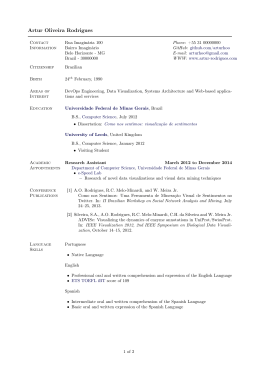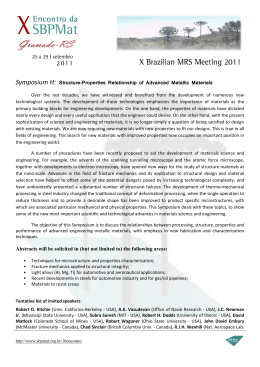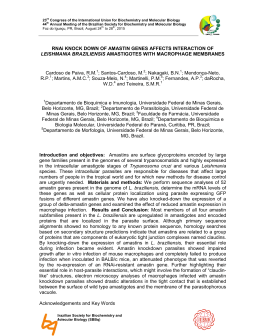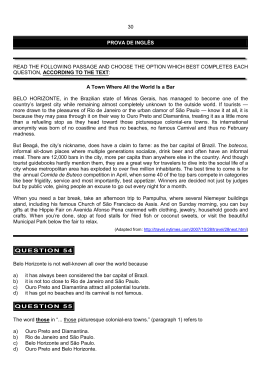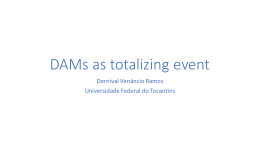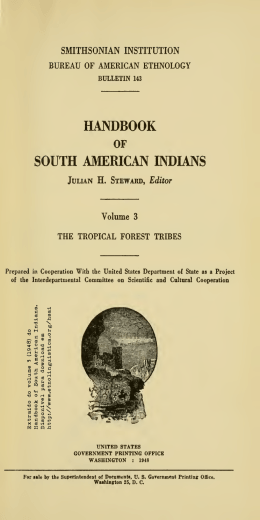Children playing beside the Xingu River at sunset. Photo: © Sue Cunningham, TribesAlive. Belo Monte M AS S I V E D AM PR OJECT S TR I K E S A T T HE HEART OF T HE A M A Z ON T he Brazilian government is planning to build what would be the world’s thirdlargest hydroelectric project on one of the Amazon’s major tributaries, the Xingu. One of more than 100 large dams being planned for the Brazilian Amazon, Belo Monte would divert the flow of the Xingu River and devastate an extensive area of the Brazilian rainforest, displacing over 20,000 people and threatening the survival of indigenous peoples. What’s the true cost of Belo Monte Dam? The answer is that no one knows yet. What’s clear is that Belo Monte will be one of the largest, most devastating infrastructure projects ever to be built in the Amazon. As its cost estimates rocket skyward and the extent of its impacts over several thousand square kilometers of the Amazon become more evident, it is clearer than ever that Brazil doesn’t need Belo Monte, and that the project will bring destruction – not development – to a unique region. THE MIGHTY XINGU RIVER THREATENED The Xingu River basin is home to 25,000 indigenous people from 18 ethnic groups, a living symbol of Brazil’s cultural and biological diversity. The Xingu flows 1,700 miles from the central savanna region of Mato Grosso to the Amazon River and, although nominally “protected” throughout most of its course by indigenous reserves and conservation units, the Xingu is severely impacted by soy monocultures and cattle ranching throughout the basin, and now by the threat of a series of large dams. dddddd International Rivers | 2150 Allston Way, Suite 300, Berkeley, CA 94704 | Tel: + 1 510 848 1155 | internationalrivers.org MARCH 2010 Belo Monte Dam on the with Brazil’s President Lula, Xingu River is currently the who said he would review largest dam project under the project and promised consideration anywhere on “no one is going to shove the planet, and would be this project down anyone’s the world’s third largest in throats.” Yet the government installed generating capacis determined to offer the ity if built. Belo Monte is project to private investors as highly complex – the project soon as possible. includes two dams, two artificial canals, two reservoirs AT WHAT COST TO (one on dry land), and an INDIGENOUS PEOPLE? extensive system of dikes, Belo Monte would directly some big enough to qualify affect indigenous communities themselves as large dams. living along what is known To build Belo Monte, more as the Xingu’s “Big Bend.” Kayapó warriors performing a traditional fishing practice. earth would have to be dug About 800 indigenous people Photo: © Sue Cunningham, TribesAlive. than was moved to build from the Juruna, Xikrín, the Panama Canal. The sheer enormity of the project means Arara, Xipaia, Kuruaya, Kayapó and other ethnic groups live that an area of more than 1,500 square kilometers would be in this region. José Carlos Arara, who met with President Lula devastated, resulting in the forced displacement of 20,000 – in July to voice his concerns, told the President “Our ances40,000 people, and grave impacts to the land and livelihood tors are there inside this land, our blood is inside the land, and of 800 indigenous people and thousands of riverine we have to pass on this land with the story of our ancestors and urban families. to our children. We don’t want to fight, but we are ready to fight for our land if we are threatened. We want to live on Belo Monte is one of the world’s most controversial dams, our land in peace with all that we have there.” and indigenous peoples and social movements in the region have fought its construction for more than 20 years. In A panel of 40 independent experts that analyzed the project’s July 2009, a delegation of groups opposing the dam met environmental impact assessment (EIA) found that, since An Energy Bonanza or an Enormous Boondoggle? Originally, five huge dams were planned for the Xingu Basin, which would have flooded 18,000 sq km of the rainforest and generated over 20,000 MW of electricity. The upstream dams would have stored water for Belo Monte (then called Kararaô), making it more effective in generating electricity. They would have also flooded indigenous reserves and protected areas. The Belo Monte plan was launched in 2002, after opposition from indigenous peoples and their supporters forced the cancellation of the original project. Under the new engineering design for the Belo Monte complex, more than 80% of the flow of the Xingu would be diverted down two huge artificial canals — each 500 meters wide — to the powerhouse, leaving the 100-km rocky stretch downstream known as the Xingu’s “Big Bend” high and dry. The powerhouse would have 11,233 MW of installed generating capacity, but would generate an average of only 4,500 MW. Belo Monte would operate at peak capacity for only a couple months out of the year, and during the four- to six-month-long low-water season on the Xingu, it would generate as little as 1,000 MW of electricity. The project’s extremely high cost and inefficiency and the river’s large seasonal variations in flow have led many to believe that after completing Belo Monte, Brazil will build other dams upstream with greater storage capacity to guarantee there will be enough water for Belo Monte to generate electricity year-round. The government says the project will cost more than US$8 billion, including interest during construction, but industry analysts are saying that due to the difficulties in building a project of this size in the Amazon, its cost could easily exceed $16 billion. Given the project’s complexity, not to mention the additional costs of constructing the project’s transmission lines, even this amount could be an underestimate. BELO MONTE The Belo Monte Hydroelectric Project PROJECT DETAILS 2 dams — one to house the turbines, and another with floodgates to restore the remaining flow to the lower Xingu River Cost: over US$16 billion FINANCING Up to 80% of the project could be financed through funds the Big Bend would receive less water than at any time in its history, fish stocks would be decimated, with some species found only in the Big Bend likely to become extinct. The drying of the Big Bend would make it impossible for indigenous communities to reach the city of Altamira to sell their produce or buy staples. The lowering of the water table would destroy the agricultural production of the region, affecting indigenous and non-indigenous farmers, as well as water quality. In all probability, the rainforests in this region would not survive. The formation of small, stagnant pools of water among the rocks of the Big Bend would be an ideal environment for proliferation of malaria and other waterborne diseases. Communities upstream, including the Kayapó Indians, would suffer the loss of migratory fish species, which are a crucial part . Hwy The Brazilian environmental agency IBAMA granted the project a preliminary environmental license in February 2010. The government hopes to auction the project to private investors in April 2010 and to start construction in late 2010. Meanwhile, a slate of legal challenges from civil society groups and Brazilian public attorneys may delay the project. ian STATUS Main Dam zon ■ Canals ama 20,000–40,000 to be displaced Altamira s Tran ■ wy. nian H mazo a Trans Dikes Artificial reservoir r 2 massive canals — each 500 meters wide, and a series of dykes to transfer the water from the Xingu to the artificial canals Turbines ve ■ Main Reservoir Ri 516 sq km would be flooded, but in all 1,522 sq km would be affected Powerhouse ng u ■ BRAZIL w lo 2 reservoirs — one in the Xingu riverbed, and the other on dry land rf ve Ri ■ PARA Xi ■ Big Bend of the Xingu (flow greatly reduced) from the Brazilian national development bank, BNDES. It would be the bank’s largest loan ever, surpassing a previous record set for its loans to dam Brazil’s Madeira River. Banco do Brasil is reportedly organizing financing from Brazilian private banks for the remainder of the cost, but whether private banks will be willing to invest in such a huge and risky project remains to be seen. of their diet. The Kayapó are bitterly opposed to the project and have vowed to wage war if the government proceeds. AT WHAT COST TO RIVERINE AND URBAN PEOPLE? Officially 19,000 people would be forcibly displaced for Belo Monte, most in the city of Altamira, but the independent review of the project found the real number of directly affected people could be twice the official estimate. Contrary to what would happen in the Big Bend, Altamira’s water table would become saturated, leading to flooding throughout the city during the rainy season. More than 100,000 migrants are expected to arrive in search of work. Riverine families who have lived off of fishing and smallscale agriculture on the Xingu for decades would be forced to relocate to Altamira, where they would compete with migrants for very few jobs, most of them low-paying. Given the limited infrastructure in the towns and villages in the region, it is expected that the vast majority of the migrants who do not find work on the dam would seek land in rainforest areas, leading to widespread deforestation and impacts on fish and wildlife, in addition to the invasion of indigenous lands. AT WHAT COST TO THE AMAZON’S BIODIVERSITY? mining and metals processing companies in the Amazon. Alcoa and Vale, who own aluminum smelters nearby, are interested in Belo Monte’s energy to fuel their expansion in the region. The energy would also go to fuel the powerful industrial sector in southeast Brazil, which consumes 28.6% of all electricity in the country, mainly in São Paulo and Minas Gerais. Considering Belo Monte’s astronomical cost, even without accounting for its social and environmental impacts, Brazil would be well-advised to give greater priority to less destructive alternatives. A study by WWF-Brazil published in 2007 showed that by 2020, Brazil could cut the expected demand for electricity by 40% through investments in energy efficiency. The power saved would be equivalent to 14 Belo Monte hydroelectric plants. This would result in national electricity savings of up to $19 billion by 2020, and reduce installed capacity by 78,000 MW. The Kayapó are opposed to the Belo Monte Dam. Photo: © Sue Cunningham, TribesAlive. Belo Monte would affect biodiversity over an extensive area of the central Amazon. The rich flooded forests of the Big Bend and middle Xingu would no longer receive seasonal floodwaters. Besides affecting endemic and migratory fish species, it would seriously affect aquatic and land fauna, including endangered species such as the white-cheeked spider monkey and black-bearded saki monkey. Threatened turtle species downstream would lose their breeding grounds. AT WHAT COST TO THE CLIMATE? Belo Monte is being proposed as a renewable energy project and an important part of the country’s commitment to reduce emissions by 38% by 2020. Yet reservoirs in tropical forests like the Amazon can themselves be significant sources of greenhouse gas emissions due to decomposing vegetation. According to Philip Fearnside, Brazil’s foremost expert on reservoir emissions, Belo Monte is unlikely to be a standalone project due to its low generating capacity in the dry season. Fearnside therefore assumes that the Barbaquara Dam – a much larger storage dam – will be built upstream. According to Fearnside, during the first 10 years of operation, the Barbaquara and Belo Monte dams combined would have emissions four times higher than an equivalent fossilfuel plant. After 20 years, the project would still have 2.5 times the emissions of a fossil-fuel plant. Even discounting its massive social and environmental impacts, the project can hardly be seen as clean. BRAZIL DOESN’T NEED BELO MONTE Power lines would be built to connect Belo Monte with the central grid, meaning that the energy from Belo Monte could go nearly anywhere in Brazil. But it’s most likely to go first to JOIN US! For more information, visit: internationalrivers.org/xingu WWF-Brazil’s “PowerSwitch Scenario” would also generate 8 million new jobs through power generation from renewable sources such as biomass, wind, solar and small hydro, avoiding the need to build dams in the Amazon. These renewable sources could account for 20% of the total electricity generated in the country by 2020. Other studies have shown that significant amounts of “new” energy could be harnessed by swapping electric showerheads for solar hot water systems, and by retrofitting older dams. Brazil’s public bank, BNDES, is expected to provide most of the financing for dams in the Amazon. BNDES uses funds from the Brazilian people, essentially employing public subsidies to make projects such as Belo Monte possible. In 2009, BNDES disbursed $8 billion to Brazil’s electric sector. Only $9.5 million, or around 0.1% of total lending to the sector, went to energy efficiency projects. With the right incentives and policies from the government and the electric sector, Brazil has the potential to be a global leader in energy efficiency and renewables – creating millions of jobs, drastically cutting carbon dioxide emissions, and conserving the globally important Amazon ecosystem.
Download
